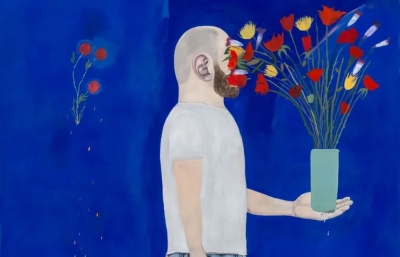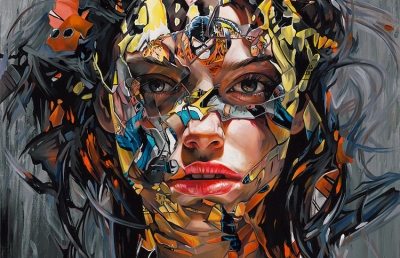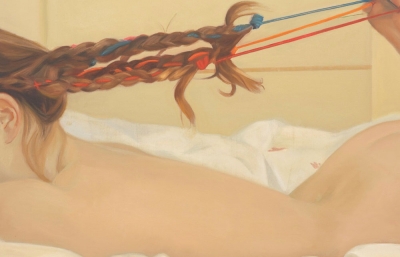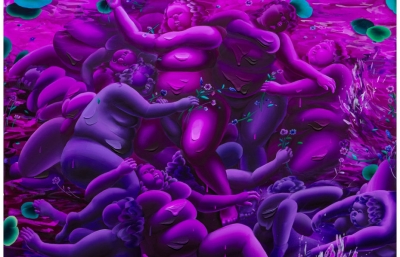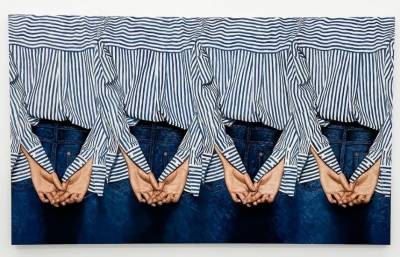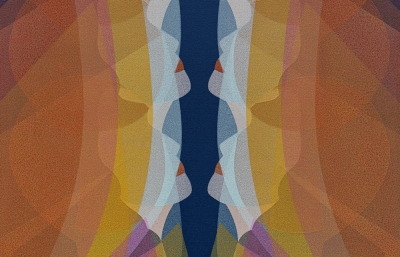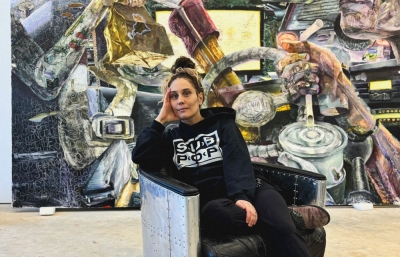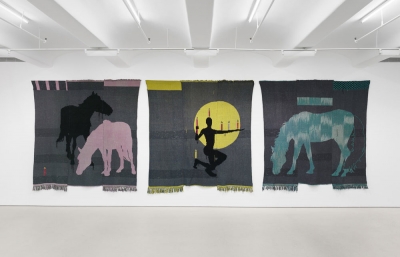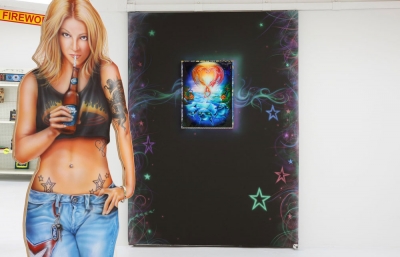Overduin & Co. is pleased to present Gate and Keyhole, a show of new paintings by the artist Caitlin Keogh. The title of the show is a pun on the artist’s name, playing on self-portraiture as a generative subject in her ongoing series of compositionally connected paintings.
For the last decade the artist’s work has played on the metaphor of the painted canvas as a body, a site of objectification that receives the gaze of the consumer or audience, and of the culturally conditioned interiority of the artistic worker. Gate and Keyhole continues a conceptual shift that began in 2020, when the artist removed the compositional gap between one painting and the next, in order to regard each canvas as a piece of a longer, continuing thread. The paintings model a kind of metabolism, a running trail of ingesting and desiring. Each of the canvases has a central figure with elements moving into and out of it. The works allude to ideas of self-presentation and subjectivity as a conglomeration of input material, and a stream of artistic output. The body is no longer a discrete object, but an experience of duration that slowly coheres into a sustained configuration.
“Keogh calls attention to the narrative labor performed by an artwork’s edges and undermines their status as conceptual bookends. She accords the same treatment to the paintings’ vertical edges, hinting at the presence of canvases beyond our purview. That dismissiveness toward the edges extends to the canvases’ surfaces. Trompe l’oeil paintings of postcards, pushpins, and tears in the canvas allow Keogh, in the vein of Magritte, to underscore the tenuous representational claims made by painting ... Interpreting the objects in Keogh’s paintings, seemingly gleaned from a limitless digital ether, puts us on far less certain ground. Wandering across the canvas, often in broken or fragmentary states, Keogh reminds us that these images are only well-drawn reproductions: more at home in the context of memes, photo dumps, and image searches familiar to us today. They are still reflections of our inner lives, however. The canvas still offers a mirror and window, and the painter’s task remains the same.” (India Mandelkern. “Caitlin Keogh at Overduin & Co.” Contemporary Art Review LA. 2021)
Keogh’s painting process culls images from her archive of books, museum postcards and photos. The archive represents a personal history of looking at artworks, traveling, and exchanging imagery with friends and teachers, and becomes a stand in for the figure of the artistic subject that is at the center of a studio practice. In Gate and Keyhole, historical styles and categories are disregarded in a free-associative process of collaging, layering, puncturing, covering, and stitching. None of the collected imagery in its subject matter is descriptive of the artist’s biography, but as objects they suggest keys to the artist’s life and work. The paintings’ imagery moves freely across the continuous picture plane. A woven grid motif that describes the canvas’ physical structure pushes the pictorial ground forward and back, loosening or conjoining the interacting parts.
Through this non-compositional game, the authorial voice declares itself as an accumulative, embellishing, fragmenting, and never-ending network of images. Keogh’s quotations of visual material are not symbols to be interpreted, other than representations of a sense of visual pleasure, and show a desire to “try on” through the mode of the scrivener or mimic. And as self-portraiture alludes to describing an identity, the artist is interested in identity as unfixed, made up of layers of social construction and performance, of undeclared parts more than declared parts, and being as ephemeral as fashion















